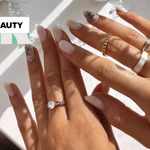Long gone are the days when women have to worry about severe hair damage, especially in light of the natural hair movement. Stylists are adopting more techniques in order to protect our natural tresses under protective styles. Luckily, the number of products we have access to has also increased. As summer approaches and the warmer weather will call for more options like braids and twists to wear throughout the season, here are a few tips to prevent hair damage.
Make sure you're retaining moisture
Although our hair textures are built to thrive in protective styles, one of the most common reasons we experience hair damage is due to not properly moisturizing - or failing to moisturize at all. I myself have been guilty of this when opting for a braid or twist option because it’s so simple to throw my braids into a bun and go. But, I’ve learned along the way that my hair has suffered in the long run - whether in terms of not growing at the pace I want, or dealing with severe shedding when I remove my braids even after I get a good trim.

Moisture is key for healthy and bountiful hair and if you don’t moisturize with braids, you’ll run into damage including split ends, potential loss of edges, extra coarse hair, and knots when removing the braids that are hard to detangle. Use a spray bottle to spray your roots daily in the morning. At night, repeat the same and tie your hair down with a scarf or bonnet to lock in the moisture. There’s no point in having a protective style if you fail to protect your hair in the process.
You still need to wash your hair if you have braids for an extended period of time
No, you don’t need a full deep clean but it’s important to still do minimal cleanses to avoid build-up. When you don’t wash your hair with braids, you run into hard to remove dandruff, oily hair that leads to other breakage, and an overall dirty look to your perfect braids from your roots.
A clean scalp is the foundation of any style and helps products react and perform better. Use a sulphate free shampoo for a light rinse if you plan to keep the braids in for 4-6 weeks. Although you don’t need to shampoo and condition braids as often as you normally would, it’s important to take your lifestyle into consideration - like exercising and other times when your hair needs to be cleansed.
Pay attention to how your stylist is braiding or twisting your hair

Your braids should not be too tight, especially around your edges. Too much pulling causes tension and can not only cause breakage, but the breakage can be irreparable. It’s also important that the braiding technique your stylist uses is consistent. If you’re getting twists, go the knotless route and ensure your stylist does not start the twist with a braid at the root.
Be careful during the braid removal process

It’s important to be gentle when you are taking down your braids. Pulling too hard can cause additional shedding of your natural hair. The best method is to use your fingers and a wide-tooth comb to detangle. It’s probably best to not use water or moisturizer to assist in the removal step or detangling will become an issue, leaving the possibility of breakage open.
Following the right steps to remove, detangle and cleanse your protective styles can make all the difference.







